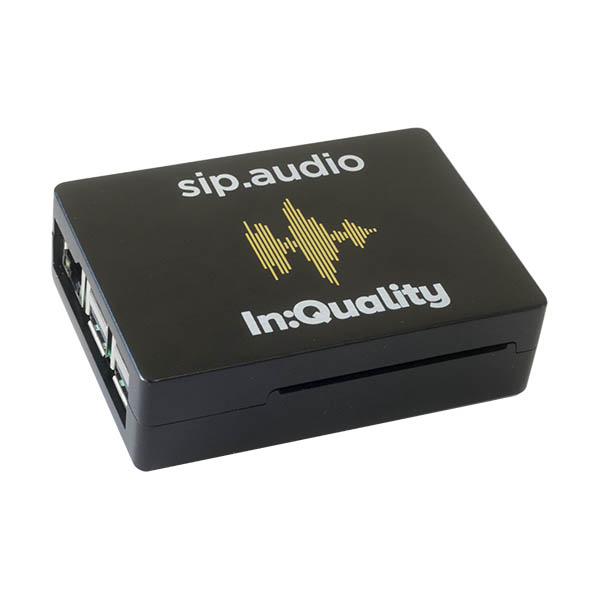Welcome
Thank-you for purchasing a USB SIP Codec ‘Zero’ from In:Quality.

Thank-you for purchasing a USB SIP Codec ‘Zero’ from In:Quality.
When you made your order, we would have asked how you would like the device to be pre-configured. If you declined this service, you’ll need to configure the unit before you can use it.
If it’s already configured – when it registers successfully – you should hear some beeping in the headphones (or audio output device), and you can begin receiving calls. We offer a free first-time test service, which you can request by raising a support ticket.
You can connect any screen to the SIP Codec using an HDMI cable, and also a USB keyboard and mouse.
Once connected, the screen will display call status, any configured quick dial shortcut buttons, the device’s IP address, and your SIP address. There are volume controls for the microphone and headphones, along with a mute icon for each. Clicking the green status box will activate the virtual keyboard for manual dialing.
You can control the SIP Codec and edit the configuration, from any computer on the same network. You’ll need to discover its IP address via your router, or by connecting a screen. We can also ship the device with a fixed IP address if that helps.
Your network may also be configured to allow access at http://inqodec
Open a web browser and enter the IP address e.g. 192.168.1.XX
The default password for the web Interface is inqodec. You may choose to change this.
There are many additional settings available here. To access the menu, click the gear icon at the top of the page…
Your SIP Codec is registered with a sip.audio account. Your SIP address will be something like your.name@sip.audio
Ask the radio producer to call your SIP address. At the agreed time, wear the headphones and check that the microphone is switched on. If ‘Auto Accept’ is disabled in the device settings, you’ll need a screen and mouse to answer the call using the checkmark button, otherwise the call will answer automatically.
A monitor and mouse is required for this, or access via a computer.
If quick dial buttons have already been configured, simply click the appropriate button, and the saved destination will be dialed. Additionally, there is a full list of configured destinations below. Press the phone handset icon to dial one of these.
To dial manually, click the green status box in order to activate the keyboard, and check that ‘SIP/Tel’ is highlighted. Enter the SIP address or phone number (Tel subscription required). Phone numbers must start with a + and the country code (e.g. +1). Click the green phone handset icon to dial.
Click the large red status box to end the connection, and confirm when prompted.
This functionality is no longer available, due to the worldwide ISDN switch-off.

The following document contains safety instructions and compliance data for the USB SIP Codec’s main control board:
https://www.raspberrypi.org/documentation/hardware/raspberrypi/compliance/rpi_SAFE_3plus_1p3.pdf